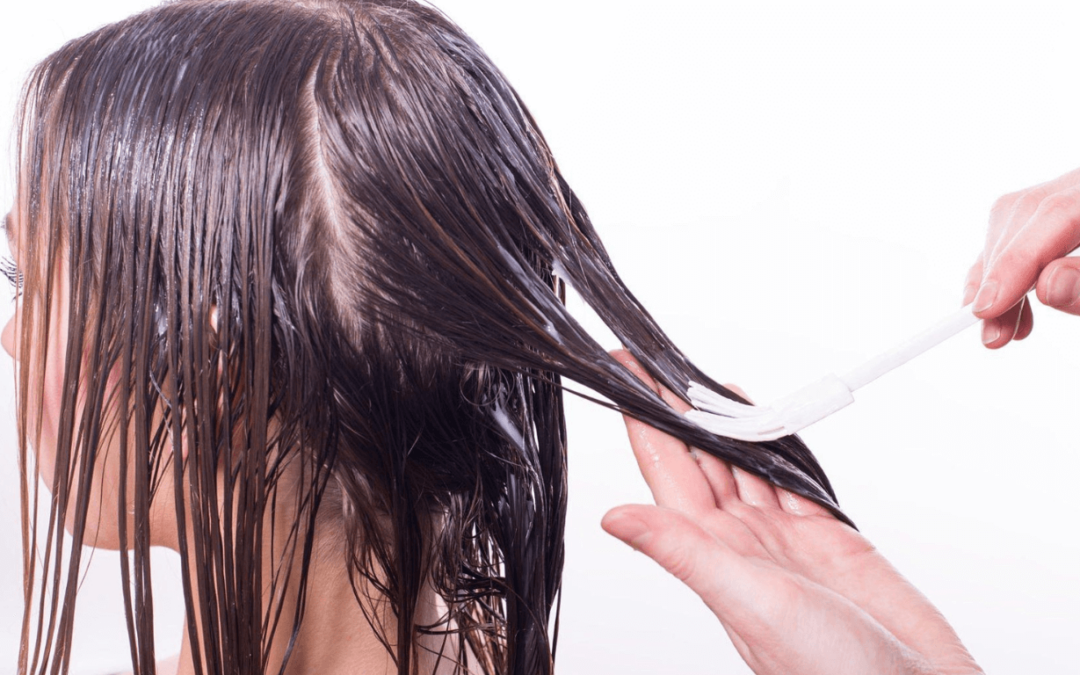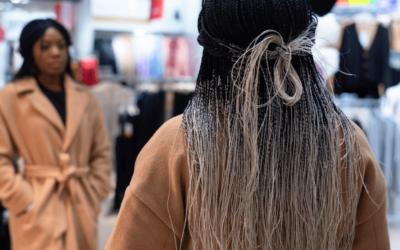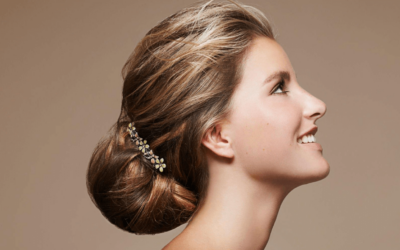Are you a water lover, spending long hours splashing in the pool during summer? Or perhaps a swimmer, dedicating hours each week to perfecting your strokes?
While water activities are exhilarating and refreshing, they may not be so kind to your precious tresses. Chlorine, a commonly used disinfectant in swimming pools, can wreak havoc on your hair, leaving it dry, brittle, and unmanageable.
In this comprehensive guide, we’ll delve into the world of “chlorine-damaged hair” and equip you with the knowledge to protect and restore your luscious locks.
Understanding Chlorine Damage
The Science Behind Chlorine’s Effects on Hair
Chlorine, as a disinfectant, is added to swimming pools to keep them free from harmful microorganisms, ensuring a safe environment for swimmers. While it effectively sanitizes the water, it can be detrimental to your hair.
When you immerse your hair in chlorinated water, chlorine molecules penetrate the hair shaft through its cuticles. The hair cuticle is like the protective outer layer of each hair strand, comprising overlapping scales that lay flat when the hair is healthy.
However, chlorine can lift these cuticle scales, causing the hair shaft to become more porous and susceptible to damage.
As the chlorine molecules penetrate the hair, they bind with the hair’s natural proteins and oils, disrupting the balance and leaving it dry and brittle.
This process is referred to as oxidative damage, where chlorine breaks down the hair’s proteins and leads to the loss of keratin, an essential protein responsible for the hair’s strength and elasticity.
Additionally, chlorine can also react with metals and minerals present in the water, such as copper, to form compounds that deposit on the hair’s surface.
These deposits can cause discoloration, especially in lighter hair shades, resulting in the infamous “green hair” phenomenon.
Common Signs of Chlorine Damage
Recognizing the signs of chlorine damage can help you take timely action to protect your hair from further harm. Here are some common signs to look out for:
Dry and Brittle Hair: Chlorine strips away the natural oils that keep your hair moisturized, leaving it dry, rough, and prone to breakage.
Discoloration: Blondes may notice greenish hues in their hair due to copper compounds formed by the reaction of chlorine and pool water.
Unmanageability: Chlorine-damaged hair tends to become tangled and difficult to style, leading to frustration during your hair care routine.
Split Ends: The oxidative damage caused by chlorine can lead to split ends, making your hair appear frayed and unkempt.
Lack of Elasticity: Healthy hair should be able to stretch and return to its original shape. However, chlorine damage can reduce hair elasticity, causing it to snap or break easily.
Itchy Scalp: Chlorine can irritate the scalp, leading to itching and discomfort.
Why Does Chlorine Affect Some People’s Hair More Than Others?
Chlorine’s impact on hair can vary from person to person, and several factors influence its effects:
Hair Porosity: Hair porosity refers to how well your hair can absorb and retain moisture. Hair with high porosity, such as damaged or chemically treated hair, is more susceptible to chlorine absorption.
Hair Texture: The texture of your hair plays a role as well. Fine hair, being more delicate, may experience more significant damage than coarser hair types.
Swimming Frequency: The more frequently you swim in chlorinated water, the higher the cumulative exposure, leading to more extensive damage over time.
Hair Care Practices: Individuals who take proactive measures to protect their hair before and after swimming are likely to experience less severe chlorine damage.
Water Quality: The chlorine concentration and overall water quality of the swimming pool can impact the extent of damage to your hair.
By understanding the science behind chlorine damage and recognizing its signs, you can take proactive steps to protect your hair and maintain its health and luster even after enjoying hours of poolside fun. The
following sections will delve deeper into preventive measures and effective ways to restore chlorine-damaged hair to its former glory. Remember, healthy hair starts with proper care and maintenance!
Preventing Chlorine Damage
Protecting your hair from chlorine damage begins before you even step foot into the pool and continues with post-swim care. By adopting a proactive approach, you can minimize the harmful effects of chlorine on your precious locks.
Pre-Swim Hair Protection Rituals
Wet Your Hair Thoroughly: Before entering the pool, saturate your hair with clean water. Wet hair is less porous and can help reduce the absorption of chlorinated water, creating a barrier that limits the amount of chlorine that can penetrate the hair shaft.
Apply a Protective Hair Mask: Prior to swimming, apply a generous amount of a protective hair mask or leave-in conditioner. These products coat your hair strands, acting as a shield against the harsh effects of chlorine.
Look for masks containing ingredients like argan oil, shea butter, or coconut oil, known for their hydrating and protective properties.
Use a Swim Cap: Although it may seem old-fashioned, wearing a swim cap is an effective way to shield your hair from direct contact with chlorinated water.
Swim caps create a physical barrier, minimizing chlorine exposure and reducing the risk of damage.
Post-Swim Hair Care Regimen
Rinse Your Hair Immediately: After you finish swimming, head straight to the showers and rinse your hair thoroughly with clean water. This step helps wash away chlorine residues and prevents them from lingering on your hair and scalp.
Shampoo with Clarifying Products: Use a sulfate-free clarifying shampoo specifically designed to remove chlorine and mineral buildup.
These shampoos gently cleanse your hair without stripping away essential oils, ensuring your hair remains clean and chlorine-free.
Deep Conditioning Treatments: Pamper your hair with deep conditioning treatments at least once a week. Chlorine can strip your hair of its natural moisture, making deep conditioning essential for replenishing lost hydration and restoring softness and shine.
Natural Remedies for Protection: In addition to commercial hair care products, consider incorporating natural remedies into your hair care routine.
For instance, an apple cider vinegar rinse can help neutralize chlorine and balance the scalp’s pH, while aloe vera gel can soothe irritated skin and nourish your hair.
By following these preventive measures, you can significantly reduce the impact of chlorine on your hair and maintain its health and beauty, even after frequent visits to the pool.
Remember, consistency is key, so make these hair protection rituals a regular part of your swimming routine for the best results.
Restoring Chlorine Damaged Hair
If your hair has already fallen victim to chlorine damage, don’t worry; there are effective ways to restore its health and vitality. With the right approach and dedication, you can revive your hair and regain its natural luster.
Trimming and Cutting: Begin the restoration process by trimming off the most damaged ends of your hair. Regular trims are essential to prevent split ends from traveling up the hair shaft, ensuring healthier growth.
Repairing with Protein Treatments: Chlorine damage can deplete your hair’s natural proteins, leading to weakened strands.
Incorporate protein treatments into your hair care routine to infuse your hair with the building blocks it needs to regain strength and resilience.
Look for treatments containing keratin or hydrolyzed proteins for best results.
Nourishing with Deep Conditioning: Deep conditioning is a crucial step in restoring moisture and suppleness to chlorine-damaged hair.
Invest in quality deep conditioning products enriched with nourishing ingredients like shea butter, argan oil, or avocado oil. These will help replenish lost moisture and improve the overall texture of your hair.
Revitalizing with Hair Oils: Regular oil treatments can work wonders for chlorine-damaged hair. Coconut oil, jojoba oil, and sweet almond oil are excellent choices, as they penetrate the hair shaft, providing deep hydration and protection.
Massage a few drops of your preferred oil into your hair and scalp, leave it on for at least an hour (or overnight), and then wash it out with a gentle shampoo.
Avoiding Heat Styling: Chlorine-damaged hair is already more vulnerable to heat damage. To speed up the recovery process, give your hair a break from heat styling tools like straighteners and curling irons.
Embrace your natural texture or try heatless styling methods to give your hair time to heal.
Protective Hairstyles: Gentle, protective hairstyles like loose braids, buns, or twists can help shield your hair from external elements while it recovers. Avoid tight hairstyles that may cause further stress on weakened hair.
Restoring chlorine-damaged hair is a gradual process that requires patience and consistent care. It may take several weeks or even months to see significant improvements, depending on the extent of the damage.
Be gentle with your hair, avoid harsh chemicals and styling practices, and maintain a healthy hair care routine to ensure your hair regains its strength and shine over time.
Additionally, adopting preventive measures like wearing a swim cap and rinsing your hair with clean water before swimming can help minimize future damage and keep your hair looking its best.
Busting Common Hair Care Myths
In the vast world of hair care advice, several myths and misconceptions circulate, often leading to confusion and improper care. Let’s debunk some of the most common hair care myths related to chlorine damage:
Myth 1: Lemon Juice is a Quick Fix
One popular myth suggests that applying lemon juice to chlorine-damaged hair can counteract the greenish tint caused by pool water.
While lemon juice is acidic and can have some mild clarifying properties, it is not a recommended solution for chlorine-damaged hair.
In fact, the acidic nature of lemon juice can further strip the hair of its natural oils, leading to dryness and potential damage. Instead, focus on using proper clarifying shampoos and protective hair care products to address chlorine damage effectively.
Myth 2: Coloring Your Hair Will Mask the Damage
Another misconception is that dyeing your hair will hide the effects of chlorine damage. While coloring your hair can temporarily mask discoloration, it does not address the underlying structural damage caused by chlorine exposure.
In fact, coloring over damaged hair can worsen its condition, as the hair may become more porous and susceptible to further damage. It’s crucial to prioritize hair repair and restoration before considering any cosmetic color treatments.
Myth 3: Frequent Shampooing Causes More Damage
Some believe that washing hair frequently exacerbates chlorine damage. However, when using a sulfate-free clarifying shampoo specifically designed to remove chlorine and mineral buildup, frequent shampooing can be beneficial.
Rinsing your hair and using the right products immediately after swimming can help prevent chlorine residues from lingering and causing further damage.
Myth 4: A Swim Cap is Sufficient Protection
While swim caps can offer some protection against chlorine, they are not foolproof. Chlorine molecules are small and can still find their way into the hair even with a cap.
Swim caps primarily protect your hair from direct exposure to the pool water, but they do not prevent moisture loss or damage from chlorine absorbed through wet hair.
It’s best to combine other preventive measures like wetting your hair, applying a protective hair mask, and rinsing after swimming, in addition to using a swim cap, for optimal protection.
By busting these common hair care myths, you can make informed decisions about protecting and restoring your hair from chlorine damage.
Prioritize proper hair care practices, nourishing treatments, and protective measures to maintain healthy and beautiful hair, even after indulging in your favorite pool activities.
Expert Tips from Hairstylists
When it comes to dealing with chlorine-damaged hair, hairstylists are a wealth of knowledge and experience. Let’s explore some expert tips from hairstylists to help you tackle chlorine damage effectively:
Top Hairstylists’ Advice on Preventing Chlorine Damage
Hairstylist 1: “Always wet your hair thoroughly before swimming to create a barrier against chlorine absorption. Dry hair tends to soak up more chlorine, leading to increased damage.”
Hairstylist 2: “Invest in a good leave-in conditioner to protect your hair from the harmful effects of chlorine and sun exposure. Leave-in conditioners create a protective layer on the hair, helping to retain moisture and prevent chlorine from penetrating the hair shaft.”
Hairstylist 3: “After swimming, rinse your hair immediately with clean water to remove chlorine and other pool chemicals. This simple step can make a significant difference in preventing chlorine damage.”
Professional Insights on Restoring Damaged Hair
Hairstylist 4: “Protein treatments are a game-changer when it comes to reviving chlorine-damaged hair. They help rebuild the hair’s structure and repair damage caused by chlorine exposure.”
Hairstylist 5: “Regular trims and avoiding heat styling are crucial for restoring your hair’s health. Trimming off split ends prevents further damage from traveling up the hair shaft, while avoiding heat styling gives your hair time to recover and regain its natural strength.”
Hairstylist 6: “Consider incorporating natural remedies like aloe vera gel or coconut oil into your hair care routine. These ingredients have soothing and moisturizing properties that can help restore your hair’s vitality.”
Hairstylist 7: “Be patient with the restoration process. Chlorine damage takes time to repair, and consistent care is key. Stick to a healthy hair care routine and resist the temptation to use harsh chemicals or excessive styling during this period.
Hairstylist 8: “Protective hairstyles can be your hair’s best friend during the recovery phase. Gentle braids or loose buns can minimize friction and stress on your damaged hair, promoting healthier regrowth.”
These expert tips from hairstylists emphasize the importance of preventive measures and proper hair care to protect and restore chlorine-damaged hair.
By following their advice and incorporating targeted treatments, you can nurture your hair back to health and ensure it remains resilient and radiant even after exposure to chlorine and other environmental stressors.
Additionally, consulting with a professional hairstylist can provide personalized recommendations and guidance based on your hair type and specific needs, enhancing your hair care journey and yielding the best possible results.
















